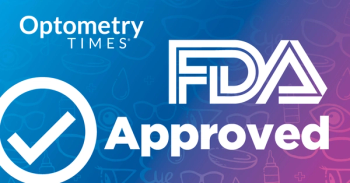
- August digital edition 2021
- Volume 13
- Issue 8
Impact of sleep on diabetes and diabetic retinopathy
Prescribed sleep hygiene may reduce the risk of severe eye disease and vision loss
Sleep problems are highly prevalent, with nearly half Americans affected each year.1 Episodic sleep abnormalities or parasomnias include sleepwalking and talking, sleep terror disorder, and nightmare disorder. Abnormalities in the amount, quality, or timing of sleep or dyssomnias include entities such as primary and secondary insomnia (prolonged sleep latency or the time it takes to fall asleep or duration of sleep), narcolepsy, restless leg syndrome, and sleep disordered breathing (obstructive, central, and mixed sleep apnea, as well as upper airway resistance syndrome.) Interestingly, dyssomnias are strongly linked to increased risk of type 2 diabetes and diabetic retinopathy in type 1 and type 2 diabetes. Let’s look at some of these findings.
By the numbers
Hyposomnia refers to short sleep duration, defined as less than 7 hours of daily sleep in adults (35% prevalence), and is a subset of insomnia. In those with severe hyposomnia (less than 5.5 hours of daily sleep), rates of diabetes are 3-fold higher in meta-analysis of observational studies.2 Conversely, severe hyposomnia and hypersomnia (greater than 9 hours of daily sleep) are highly associated with insulin resistance and adiposity that significantly increase the risk of type 2 diabetes.3
Indeed, meta-analysis of more than 480,000 participants revealed a U-shaped pattern of diabetes prevalence in patients with very short and very long sleep duration. This analysis suggests a “sweet spot” of roughly 7.5 hours of sleep for lowest diabetes risk after controls for common diabetogenic risk factors such as family history, hypertension, body mass index, and age.4 The mechanisms linking short and long sleep duration to diabetes risk are believed to be multifactorial, including neuro-endocrine perturbances of circadian rhythm affecting glucose metabolism.5,6
Obstructive sleep apnea syndrome (OSAS) is characterized by partial (hypopneic) or total (apneic) collapse of the airway, resulting in temporary cessation or reduction of airflow greater than 10 seconds during sleep with at least a 4% decline in red blood cell oxygen saturation.7 OSAS affects about 20% of the adult population, but it is asymptomatic in 85% of patients. Apnea severity is graded by the apnea-hypopnea index (AHI), which represents the total number of apneic plus hypopneic events per hour of sleep (Table). Standard therapy for OSAS includes use of continuous positive airway pressure (CPAP) devices, but half of all patients discontinue therapy within the first year.
Severe OSAS (AHI greater than 30 events per hour) was associated with a 71% increased incidence of diabetes over 13 years of follow-up, independent of adiposity and other diabetogenic factors.8 The mechanisms linking OSAS to diabetes are not entirely clear but may include increased inflammation, sympathetic activity, and insulin resistance because of chronic hypoxia.9 At least 1 study has linked OSAS to changes in intestinal flora that modulate insulin sensitivity and resistance in humans.10
Retina involvement
Evidence exists linking sleep problems with risk for developing diabetic retinopathy (DR), sight-threatening DR, and diabetic macular edema (DME). In 1 study from Singapore, long sleep (greater than 8 hours) and daytime sleepiness were independently associated with triple the risk of sight-threatening DR.11 One hypothesis is that excessive sleep results in increased retinal oxygen demand by rod photoreceptors, resulting in relative hypoxia. To test this, animals with DME were fitted with a green LED through closed eyelids during sleep, resulting in significant improvements in retinal thickness assessed by optical coherence tomography in 17 of 26 eyes.12 Similarly, an LED embedded within a soft contact lens reduced angiogenesis in an animal model of DR.13
Sleep apnea appears to be even more strongly connected to sight-threatening DR. Presence of OSAS in 230 participants with type 2 diabetes was associated with a 5-fold increased risk over 4 years.14 More specifically, an AHI greater than 11.9 compared with less than 4.8 events per hour was associated with a 7.5-fold increased risk, and CPAP use decreased the hazard ratio more than 30%. Another interesting study conducted at the Maine Veterans Affairs Medical Center, representing collaboration between optometry and pulmonary specialists, showed that better CPAP compliance (greater than 4 hours nightly) was associated with a reduced odds ratio of having DR after all controls, including HbA1c, disease duration, blood lipids, renal function, insulin use, body mass index, smoking, and AHI.15 Another case-control study in Taiwan linked severe OSAS to a 9-fold increased likelihood of DME, particularly as time spent with oxygen saturation less than 90% increased.16
One important consideration is whether CPAP use improves visual acuity in patients with vision loss from DME. A prospective study of 131 patients with DME and severe OSAS (mean AHI=36) receiving macular photocoagulation (baseline visual acuity ranged from 20/40 to 20/200) showed no statistically significant difference in those randomized to usual care vs usual care plus referral to a CPAP clinic at 12 months (mean visual acuity=20/63 in both groups).17 However, mean CPAP usage was a mere 1.7 hours, and the study includes no data on “gold standard” anti-VEGF therapy for DME.
These study results raise 2 questions: Would increased CPAP use have improved outcomes? Would CPAP added to anti-VEGF therapy have been beneficial?
Conclusion
Collectively, these data suggest that OSAS severity is strongly linked to DR and DME. Longer nightly use of CPAP and achieving lower AHI scores may protect against both diseases, and “preventive” CPAP therapy is likely more effective than “therapeutic” CPAP use for established diabetes-related retinal disease.
Optometrists should ask their diabetes patients about sleep problems and make appropriate referral to sleep medicine specialists, particularly when DR or DME are present and when patients are clinically obese. Of note, analysis of 200 patients with type 1 diabetes consecutively assessed by polysomnography (PSG) found high rates of undiagnosed OSAS in both overweight (60%) and healthy weight (32%) participants.18 PSG is the most important tool for diagnosing sleep disorders, and home-based PSG is now common, accurate, and inexpensive compared with in-clinic sleep studies, particularly for sleep apnea.
Encouraging use of prescribed sleep therapy (CPAP, good sleep hygiene) as a method to reduce the risk of severe eye disease and vision loss may help motivate patients and even save lives.
References
1. Acquavella J, Mehra R, Bron M, Suomi JM, Hess GP. Prevalence of narcolepsy, other sleep disorders, and diagnostic tests from 2013–2016 in insured patients actively seeking care. J Clin Sleep Med. 2020;16(8):1255-1263. doi:10.5664/jcsm.8482
2. Ogilvie RP, Patel SR. The epidemiology of sleep and diabetes. Curr Diab Rep. 2018;18(10):82. doi:10.1007/s11892-018-1055- 8
3. Brady EM, Bodicoat DH, Hall AP, et al. Sleep duration, obesity and insulin resistance in a multi-ethnic UK population at high risk of diabetes. Diabetes Res Clin Pract. 2018;139:195-202. doi:10.1016/j.diabres.2018.03.010
4. Shan Z, Ma H, Xie M, et al. Sleep duration and risk of type 2 diabetes: a meta-analysis of prospective studies. Diabetes Care. 2015;38(3):529-537. doi:10.2337/dc14-2073
5. Briançon-Marjollet A, Weiszenstein M, Henri M, Thomas A, Godin-Ribuout D, Polak J. The impact of sleep disorders on glucose metabolism: endocrine and molecular mechanisms. Diabetol Metab Syndr. 2015; 7:25. doi:10.1186/s13098-015- 0018-3
6. Rutters F, Besson H, Walker M, et al. The association between sleep duration, insulin sensitivity, and β-cell function: the EGIR-RISC study. J Clin Endocrinol Metab. 2016;101(9):3272-3280. doi:10.1210/jc.2016-1045
7. Gottlieb DJ, Punjabi NM. Diagnosis and management of obstructive sleep apnea: a review. JAMA. 2020 14;323(14):1389- 1400. doi:10.1001/jama.2020.3514
8. Nagayoshi M, Punjabi NM, Selvin E, et al. Obstructive sleep apnea and incident type 2 diabetes. Sleep Med. 2016;25:156- 161. doi:10.1016/j.sleep.2016.05.009
9. Tahrani AA, Ali A. Obstructive sleep apnoea and type 2 diabetes. Eur Endocrinol. 2014;10(1):43-50. doi:10.17925/ EE.2014.10.01.43
10. Ko CY, Liu QQ, Su HZ, et al. Gut microbiota in obstructive sleep apnea-hypopnea syndrome: disease-related dysbiosis and metabolic comorbidities. Clin Sci (Lond). 2019;133(7):905-917. doi:10.1042/CS20180891
11. Tan NYQ, Chew M, Tham YC, et al. Associations between sleep duration, sleep quality and diabetic retinopathy. PLoS One. 2018;13(5):e0196399. doi:10.1371/journal.pone.0196399
12. Kolb H, Fernandez E, Nelson R, eds. Diabetic retinopathy and a novel treatment based on the biophysics of rod photoreceptors and dark adaptation. University of Utah Health Sciences Center; 1995.
13. Cook CA, Martinez-Camarillo JC, Yang Q, et al. Phototherapeutic contact lens for diabetic retinopathy. IOVS 2018; 59:5814.
14. Altaf QA, Dodson P, Ali A, et al. Obstructive sleep apnea and retinopathy in patients with type 2 diabetes. A longitudinal study. Am J Respir Crit Care Med. 2017;196(7):892-900. doi:10.1164/ rccm.201701-0175OC
15. Smith JP, Cyr LG, Dowd LK, Duchin KS, Lenihan PA, Sprague J. The Veterans Affairs continuous positive airway pressure use and diabetic retinopathy study. Optom Vis Sci. 2019;96(11):874-878. doi:10.1097/ OPX.0000000000001446
16. Vié AL, Kodjikian L, Agard E, et al. Evaluation of obstructive sleep apnea syndrome as a risk factor for a diabetic macular edema in patients with type II diabetes. Retina. 2019;39(2):274-280. doi:10.1097/ IAE.0000000000001954
17. West SD, Prudon B, Hughes J, et al; ROSA trial investigators. Continuous positive airway pressure effect on visual acuity in patients with type 2 diabetes and obstructive sleep apnoea: a multicentre randomised controlled trial. Eur Respir J. 2018;52(4):1801177. doi:10.1183/13993003.01177-2018
18. Banghoej AM, Nerild HH, Kristensen PL, et al. Obstructive sleep apnoea is frequent in patients with type 1 diabetes. J Diabetes Complications. 2017;31(1):156-161. doi:10.1016/j.jdiacomp.2016.10.006
Articles in this issue
over 4 years ago
Optimizing management of dry eye diseaseover 4 years ago
New drug delivery system aims to improve adherenceover 4 years ago
Cotton wool spot appears in patient with COVID-19over 4 years ago
What’s new in low vision rehabilitationover 4 years ago
Treatment options for ocular allergiesover 4 years ago
Dry eye management may benefit patients with keratoconusover 4 years ago
Give toric ortho-k lenses a tryover 4 years ago
Patient log brings back memoriesover 4 years ago
5 phrases to communicate with LASIK patientsNewsletter
Want more insights like this? Subscribe to Optometry Times and get clinical pearls and practice tips delivered straight to your inbox.








































